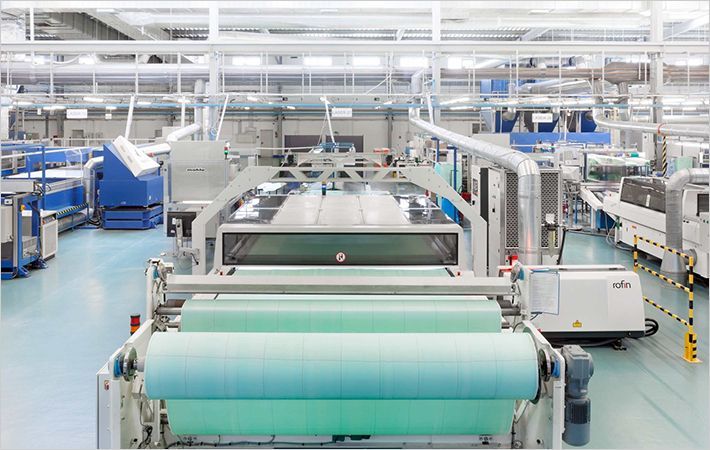Alarmingly, some 600 people die in household fires in Germany ever year. Often started by nothing more than a small tea light, such fires can soon take hold. Once a few objects are alight, room temperatures shoot up as high as 800 degrees Celsius, and flames quickly spread to other rooms, leaving inhabitants with precious little time to escape after a fire has broken out – usually no more than around two minutes.
Modern-day apartments and offices contain considerably more combustible materials than they did a few decades ago. Items such as furniture, electronics and electrical equipment are predominantly made up of highly flammable materials that ignite easily, meaning such products would be ablaze in no time at all if it were not for addition of flame retardants.
For instance, it only takes eight minutes for a television that has not been fire- proofed to go up in flames, whereas a TV set that has been treated with retardants remains undamaged. Prof. Dr. Manfred Döring and his team at the Fraunhofer Institute for Structural Durability and System Reliability LBF develop flame retardants for polymer materials.
These are used in the transport and construction industries, in electronics and electrical appliances, and many other applications. “Flame retardants prevent fires and slow the spread of the blaze. People are given more time to escape, sometimes up to 20 minutes, which significantly increases the chance of surviving a fire unharmed,” says Döring.
Flame retardants must meet high standards
Flame retardants have to satisfy a number of challenging criteria. They must be environmentally friendly, non-hazardous to humans, animals and plants, and must not release any additional toxic fumes when they burn. These additives should not escape the finished product into the atmosphere, or when it comes into contact with water.
And researchers must make sure the flame retardant does not react with the plastic or other components in unwelcome ways that might alter the material, influence its functionality or affect its appearance.
“Flame resistant work clothing, for instance, has to be machine washable, but cannot lose its protective properties every time it is washed. To prevent the chance of a short circuit developing into a fire, printed circuit boards in electronic devices must remain fully functional and flame retardant over many years, at temperatures that can range from -40 to +60 degrees Celsius,” says Döring.
He and his team of scientists only work with halogen-free, non-toxic flame retardant additives, and tailor each substance to the particular plastic in question. Depending on the intended application for the material, they use inorganic compounds and compounds containing nitrogen and phosphorous.

